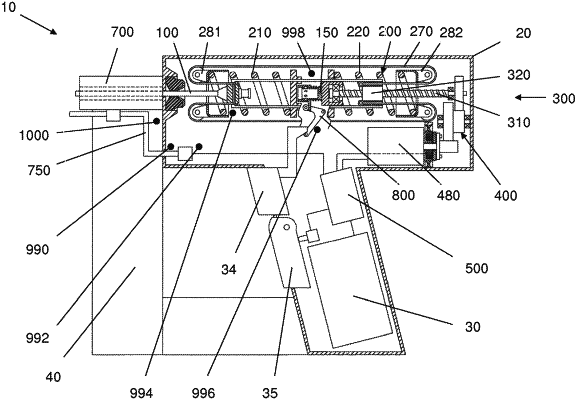| CPC B25C 1/06 (2013.01) [B25C 1/00 (2013.01); B25C 1/008 (2013.01)] | 17 Claims |

|
1. A method for operating a drive-in device for fastening elements, the drive-in device comprising:
a drive-in channel,
a drive-in element for driving a fastening element arranged in the drive-in channel into a substrate,
a drive for driving the drive-in element onto the fastening element arranged in the drive-in channel, the drive comprising a rotating motor,
a magazine for fastening elements,
a transport comprising a slide for successively transporting fastening elements, present in the magazine, into the drive-in channel, and
a detector configured to detect whether and/or how many fastening elements are present in the magazine, the method comprising:
operating the motor in a first mode if the detector detects a number of fastening elements in the magazine that is at least a minimum number,
operating the motor in a second mode different from the first mode if the detector does not detect any fastening elements in the magazine or detects a number of fastening elements therein that is below the minimum number, acoustically and/or haptically identifying that the fastening elements are used up or will be used up following a next drive-in process based on a deviation of the second mode from the first mode,
wherein the deviation comprises a different sequence of individual operating phases of the motor comprising a different operating speed of the motor and at least one of a different temporal spacing and a different temporal duration of the operation of the motor.
|